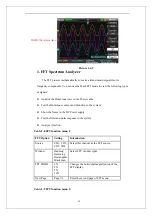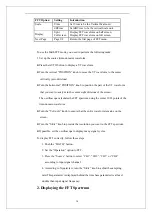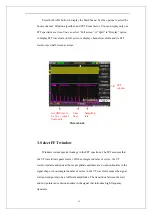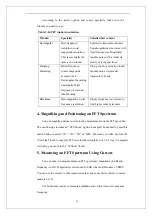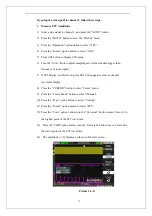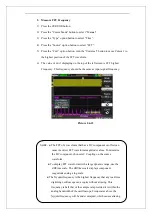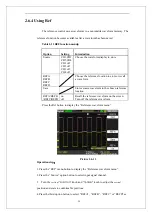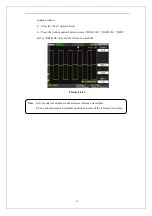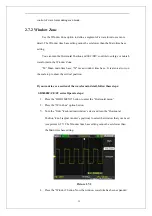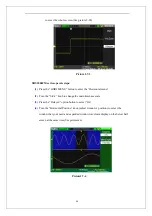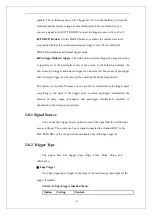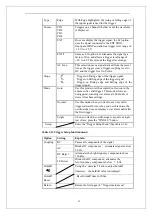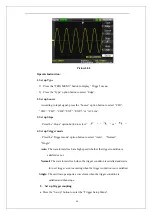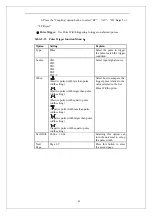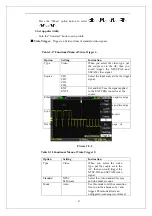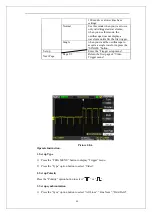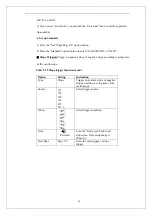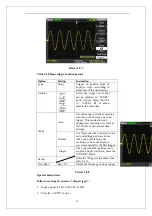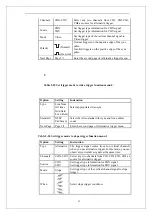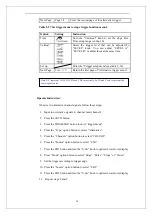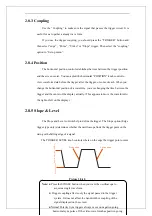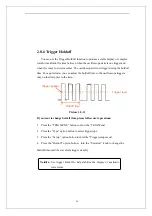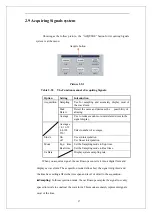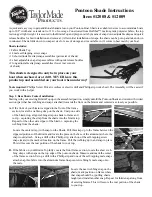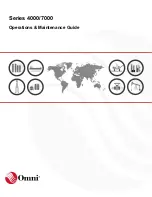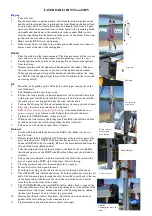
43
Type
Edge
With Edge highlighted, the rising or falling edge of
the input signal is used for the trigger.
CH1
CH2
CH3
CH4
Triggers on a channel whether or not the waveform
is displayed.
EXT
Does not display the trigger signal; the Ext option
uses the signal connected to the EXT TRIG
front-panel BNC and allows a trigger level range of
-1.2V to +1.2V.
EXT/5
Same as Ext option, but attenuates the signal by a
factor of five, and allows a trigger level range of
+6V to -6V.This extends the trigger level range.
Source
AC Line
This selection uses a signal derived from the power
line as the trigger source; trigger coupling is set to
DC and the trigger level to 0 volts.
Slope
Trigger on Rising edge of the trigger signal.
Trigger on Falling edge of the trigger signal.
Trigger on Rising edge and Falling edge of the
trigger signal.
Auto
Use this mode to let the acquisition free-run in the
absence of a valid trigger; This mode allows an
untriggered, scanning waveform at 100 ms/div or
slower time base settings.
Normal
Use this mode when you want to see only valid
triggered waveforms; when you use this mode, the
oscilloscope does not display a waveform until after
the first trigger.
Mode
Single
when you want the oscilloscope to acquire a single
waveform, press the “SINGLE ”button.
Set up
Enter the “Trigger Setup Menu”(See table 2-14).
Table 2-14 Trigger Setup function menu
Option Setting
Explain
DC
Passes all components of the signal
AC
Blocks DC components
,
attenuates signals below
50 Hz.
HF Reject
Attenuates the high-frequency components above
150 kHz.
Coupling
LF Reject
Blocks the DC component , attenuates the
low-frequency components below
7
kHz.
Holdoff
Using the “universal” knob to adjust holdoff
time(sec)
,
the holdoff value is displayed.
Holdoff
Reset
Reset holdoff time to 100ns.
Return
Return the first page of “ Trigger main menu”.
Summary of Contents for SDS1000 Series
Page 146: ...138 Coupling DC...

